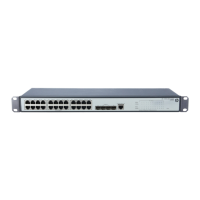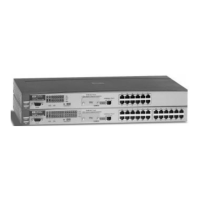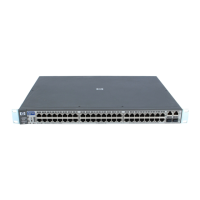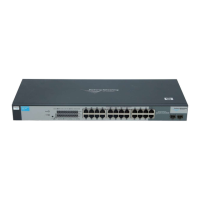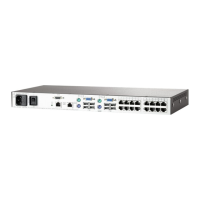network environments where multiple VLANs exist
Layer 3 services
Address Resolution Protocol
(ARP): determines the MAC address of another IP host in the same subnet; supports static ARPs;
gratuitous ARP allows detection of duplicate IP addresses; proxy ARP allows normal ARP operation between subnets or when
subnets are separated by a Layer 2 network
User Datagram Protocol
(UDP)
helper
: redirects UDP broadcasts to specific IP subnets to prevent server spoofing
Dynamic Host Configuration Protocol
(DHCP): simplifies the management of large IP networks and supports client and server;
DHCP Relay enables DHCP operation across subnets
Domain Name System
(DNS): provides a distributed database that translates domain names and IP addresses, which simplifies
network design; supports client and server
Layer 3 routing
Static IPv4 routing
: provides simple manually configured IPv4 routing
Routing Information Protocol (RIP):
uses a distance vector algorithm with UDP packets for route determination; supports
RIPv1 and RIPv2 routing; includes loop protection
Open Shortest Path First (OSPF)
delivers faster convergence; uses this link-state routing Interior Gateway Protocol (IGP), which supports ECMP, NSSA, and MD5
authentication for increased security and graceful restart for faster failure recovery
Intermediate system to intermediate system
(IS-IS): uses a path vector Interior Gateway Protocol (IGP), which is defined by the
ISO organization for IS-IS routing and extended by IETF RFC 1195 to operate in both TCP/IP and the OSI reference model
(Integrated IS-IS)
Border Gateway Protocol 4
(BGP-4): delivers an implementation of the Exterior Gateway Protocol (EGP) utilizing path vectors;
uses TCP for enhanced reliability for the route discovery process; reduces bandwidth consumption by advertising only
incremental updates; supports extensive policies for increased flexibility; scales to very large networks
Policy-based routing
: makes routing decisions based on policies set by the network administrator
IP performance optimization
: is a set of tools to improve the performance of IPv4 networks; includes directed broadcasts,
customization of TCP parameters, support of ICNP error packets, and extensive display capabilities
Unicast Reverse Path Forwarding
(uRPF): is defined by RFC 3704 and limits erroneous or malicious traffic
Static IPv6 routing
: provides simple manually configured IPv6 routing
Dual IP stack
: maintains separate stacks for IPv4 and IPv6 to ease the transition from an IPv4-only network to an IPv6-only
network design
Routing Information Protocol next generation
(RIPng): extends RIPv2 to support IPv6 addressing
OSPFv3
: provides OSPF support for IPv6
IS-IS for IPv6
: extends IS-IS to support IPv6 addressing
BGP+
: extends BGP-4 to support Multiprotocol BGP (MBGP), including support for IPv6 addressing
IPv6 tunneling
: allows IPv6 packets to traverse IPv4-only networks by encapsulating the IPv6 packet into a standard IPv4
packet; supports manually configured, 6to4, and Intra-Site Automatic Tunnel Addressing Protocol (ISATAP) tunnels; is an
important element for the transition from IPv4 to IPv6
Multiprotocol Label Switching
(MPLS): uses BGP to advertise routes across Label Switched Paths (LSPs), but uses simple labels
to forward packets from any Layer 2 or Layer 3 protocol, thus reducing complexity and increasing performance; supports
graceful restart for reduced failure impact; supports LSP tunneling and multilevel stacks
Multiprotocol Label Switching
(MPLS)
Layer 3 VPN
: allows Layer 3 VPNs across a provider network; uses MP-BGP to establish
private routes for increased security; supports RFC 2547bis multiple autonomous system VPNs for added flexibility
Multiprotocol Label Switching
(MPLS)
Layer 2 VPN
: establishes simple Layer 2 point-to-point VPNs across a provider network
using only MPLS Label Distribution Protocol (LDP); requires no routing and therefore decreases complexity, increases
performance, and allows VPNs of non-routable protocols; uses no routing information for increased security; supports Circuit
Cross Connect (CCC), Static Virtual Circuits (SVCs), Martini draft, and Kompella-draft technologies
QuickSpecs
HP 7500 Switch Series
Overview
DA - 13805 Worldwide — Version 29 — December 9, 2013
Page 5
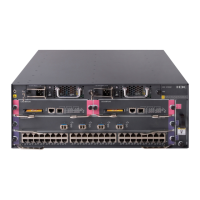
